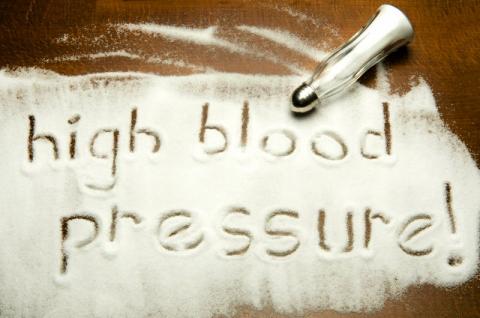Salt Awareness Week – check the labels

This Salt Awareness Week (20-26 March) the Public Health Agency (PHA) is reminding everyone of the dangers of eating too much salt and asking everyone to check food labels to see how much salt is in our food.
Too much salt in our diet can contribute to high blood pressure – also known as hypertension – and increase the risk of stroke and heart disease, some of the leading causes of disability and death in Northern Ireland. Hypertension often has no symptoms, but if you have the condition, you are more likely to develop heart disease or have a stroke.
Caroline Bloomfield, Health and Social Wellbeing Improvement Senior Manager at the PHA, said: “Moderation is key. A very small amount of salt is an essential part of our diet; however, often without realising it, most of us are eating too much and this can have negative consequences for our health.
“It is recommended that adults eat no more than six grams of salt a day (about a teaspoon) and children should have even less. We can all take greater control over our salt intake by simply using less salt during cooking and at the table. It’s important to remember to taste food at the table before adding salt, rather than doing this automatically.
“However, it is important to realise that seventy-five percent of the salt we consume is already in the food we buy. We know that ready prepared and processed foods can be high in salt and lead us to eating too much. For example, a tin of cream of chicken soup can contain 1.9g of salt – almost a third of the recommended daily amount in just one tin. Ready meals and snack foods, such as crisps, in particular can be very high in salt. By reading product labels before we buy, we can choose the products that are lower in salt and better for our health.
“If a product uses the ‘traffic light’ indicators on its packaging, try to go for products marked green or amber for salt content, and stay clear of products marked red for salt.”
For foods that don’t use red, amber and green labels, more than 1.5g salt per 100g is high in salt; between 0.3g and 1.5g has medium salt content; and 0.3g salt or less per 100g is low in salt.
Caroline continued: “Reducing Northern Ireland’s average daily salt intake for adults to 6g could reduce the number of deaths from heart attacks and strokes every year.
“Reducing the amount of salt we use in cooking doesn’t necessarily mean less flavoursome meals –replacing salt with alternative flavourings such as pepper, lemon juice, herbs and spices can make food appetising.
“By following these simple suggestions, you will be taking the first steps towards improving your overall health.”
The PHA’s Choose to Live Better website has further advice and tips on eating well and getting active – www.choosetolivebetter.com
Additional information on salt intake can be found at www.nhs.uk/livewell/goodfood/pages/salt.aspx
Top tips:
- Read the salt content on the label – look at the amount of salt per 100g:
- More than 1.5g salt per 100g is high in salt (red)
- Between 0.3g and 1.5g is medium (amber)
- 0.3g salt or less per 100g is low salt content (green).
- Many food labels list ‘sodium’ rather than salt. To convert this to the amount of salt, multiply the amount of sodium listed by a factor of 2.5. For example, if a food label says a product has 0.6g of sodium, it contains 1.5g of salt.
- Adults should eat no more than 2.4g of sodium per day, as this is equal to 6g of salt.
- Children should eat less than an adult’s daily recommendation of six grams, but how much differs with age so it’s important to keep an eye on how much salt is already in manufactured foods:
- 1 to 3 years – no more than 2g of salt per day
- 4 to 6 years – no more than 3g of salt per day
- 7 to 10 years – no more than 5g of salt per day
- 11 years and over – no more than 6g of salt per day
- Babies under a year old should have less than 1g of salt a day. If a baby is breastfed, they will get the right amount of minerals, including sodium and chloride, from breast milk. Formula milk contains a similar amount of sodium to breast milk.
